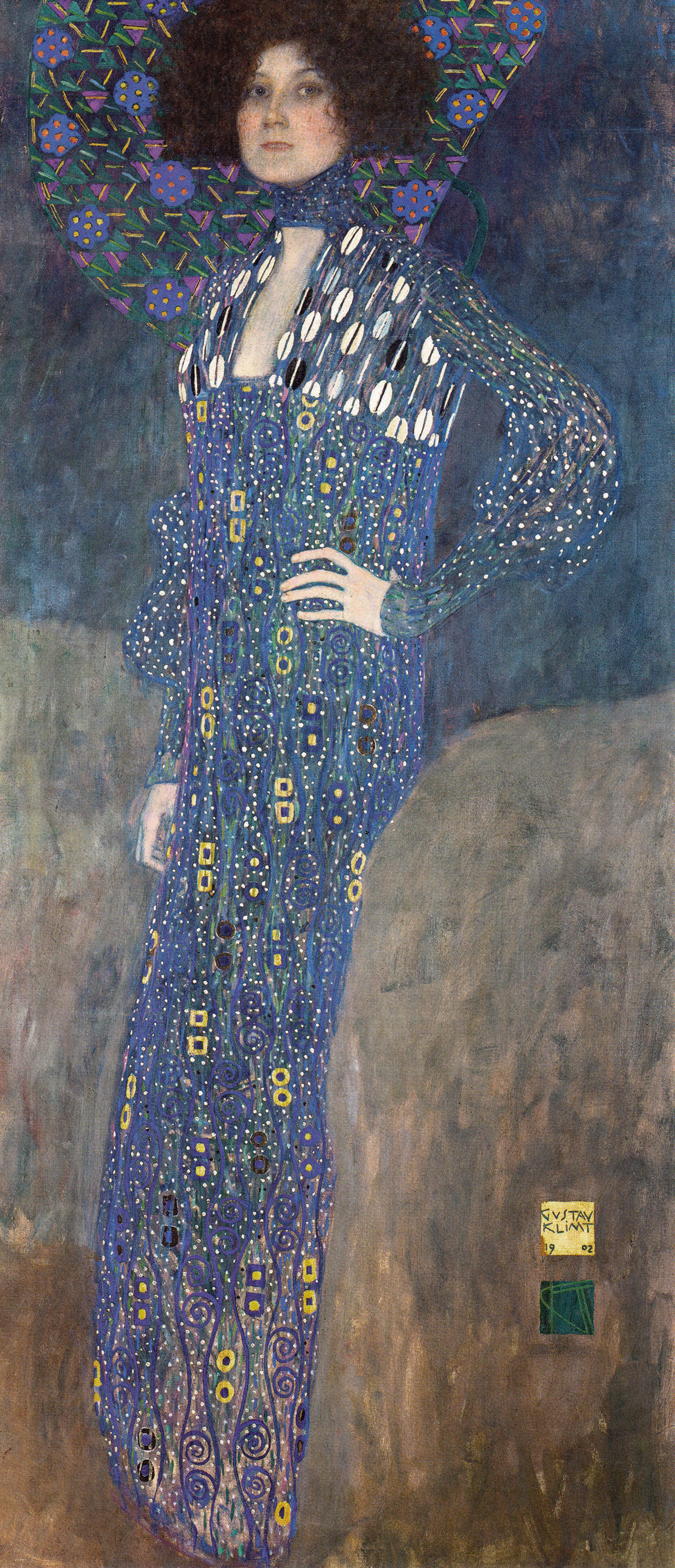


“Another, unfinished portrait has come to us as if from a blue-mottled world of majolica and mosaic,” wrote the Hungarian journalist Ludwig Hevesi when Gustav Klimt unveiled his full-length portrait of Emilie Flöge. Klimt was no stranger to critics baffled by his secessionist style, but this portrait wasn't for the critics, it was for Emilie—Klimt’s muse, intellectual companion and friend.
Emilie Flöge and her older sister Helene were the owners of a couture house called Schwestern Flöge (Flöge Sisters), the leading salon of Vienna’s bohemian fashion world, serving the progressive elite the freshest modern styles. Emilie was both a successful business woman and a fashion rebel, evolving her dramatic take on the Reformkleider, flowing garments that allowed women to move freely, and eschewed the brutal corsetry of the 18th century in favor of bold pattern and draped prints that would look at home on today’s runways.
Emilie likely met Gustav Klimt through her sister Helene, who married Ernst Klimt, Gustav’s brother. Ernst died in 1892, leaving Helene under Gustav’s guardianship. Emilie was 18 when her sister was widowed, and over the following years she spent summers with Gustav at the Flöge family home on Lake Attersee.
Historians are inveterate gossips, so naturally the relationship between Klimt and Emilie Flögs has been the subject of salacious speculation. Gustav was 12 years older than Emilie, and an infamous womanizer—never marrying, but fathering at least 14 children. Was Emilie his lover? Does Klimt’s seminal painting The Kiss depict the artist embracing Emilie? Maybe. In Vienna: Art and Design, Frances Lindsey writes: “While it may have begun as infatuation, it matured into a close relationship that was intellectually and emotionally intimate rather than physical.”
Whatever their early relationship, Emilie Floge and Gustav Klimt became inseparable friends, a relationship that lasted for 27 years, until Klimt’s death in 1918. Klimt sent hundreds of postcards and letters to Emilie, many of which are preserved in private collections. On his death, she inherited half of his estate. The artist’s last words were were to call out for his lifetime partner and friend, “Get Emilie”
...
Got questions, comments or corrections about Portrait of Emilie Flöge? Join the conversation in our Discord, and if you enjoy content like this, consider becoming a member for exclusive essays, downloadables, and discounts in the Obelisk Store.
